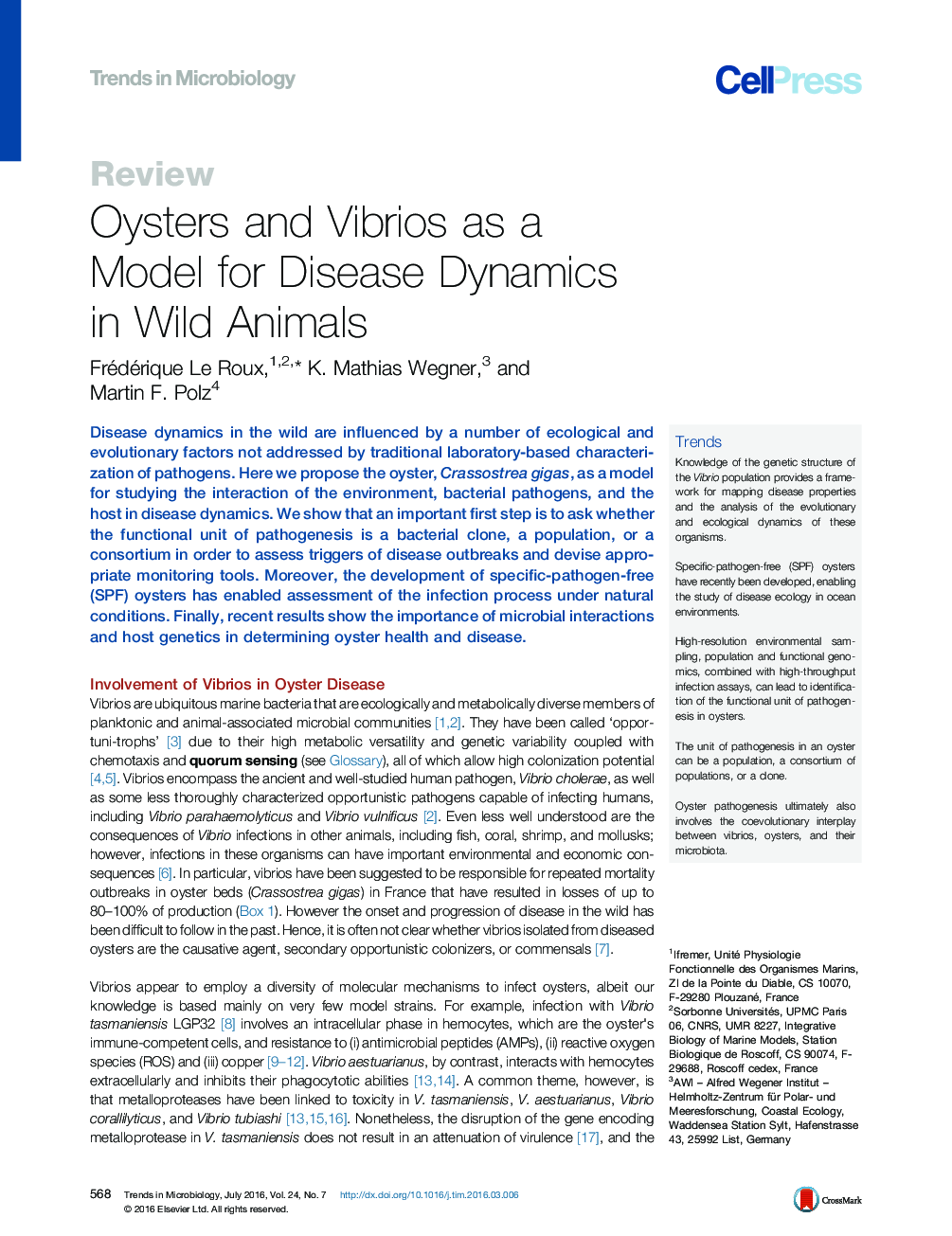| کد مقاله | کد نشریه | سال انتشار | مقاله انگلیسی | نسخه تمام متن |
|---|---|---|---|---|
| 3421717 | 1226672 | 2016 | 13 صفحه PDF | دانلود رایگان |
Disease dynamics in the wild are influenced by a number of ecological and evolutionary factors not addressed by traditional laboratory-based characterization of pathogens. Here we propose the oyster, Crassostrea gigas, as a model for studying the interaction of the environment, bacterial pathogens, and the host in disease dynamics. We show that an important first step is to ask whether the functional unit of pathogenesis is a bacterial clone, a population, or a consortium in order to assess triggers of disease outbreaks and devise appropriate monitoring tools. Moreover, the development of specific-pathogen-free (SPF) oysters has enabled assessment of the infection process under natural conditions. Finally, recent results show the importance of microbial interactions and host genetics in determining oyster health and disease.
TrendsKnowledge of the genetic structure of the Vibrio population provides a framework for mapping disease properties and the analysis of the evolutionary and ecological dynamics of these organisms.Specific-pathogen-free (SPF) oysters have recently been developed, enabling the study of disease ecology in ocean environments.High-resolution environmental sampling, population and functional genomics, combined with high-throughput infection assays, can lead to identification of the functional unit of pathogenesis in oysters.The unit of pathogenesis in an oyster can be a population, a consortium of populations, or a clone.Oyster pathogenesis ultimately also involves the coevolutionary interplay between vibrios, oysters, and their microbiota.
Journal: - Volume 24, Issue 7, July 2016, Pages 568–580
